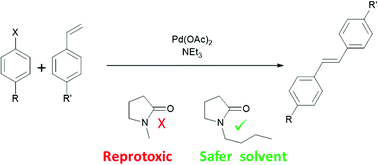Multicomponent Multicatalyst Reactions (MC)2R: One-Pot Synthesis of 3,4-Dihydroquinolinones
Davenport Research Laboratories, Department of Chemistry, University of Toronto, 80 St George Street, Toronto, Ontario M5S 3H6, Canada
Org. Lett., 2013, 15 (9), pp 2128–2131
DOI: 10.1021/ol4006008
Publication Date (Web): April 19, 2013
Copyright © 2013 American Chemical Society
Mark Lautens , O.C.
University Professor
| |||||||||||||||||||||||||||||||||||||||||||||||||||||||||||||||||||||||||||||||||||||||||||||||||||||||
Personal | ||
| Place and Date of Birth | Hamilton, Ontario, Canada | July 9, 1959 |
Education | ||
| Harvard University | NSERC PDF with D. A. Evans | 1985 - 1987 |
| University of Wisconsin-Madison | Ph.D. with B. M. Trost | 1985 |
| University of Guelph | B.Sc. - Distinction | 1981 |
Academic Positions | ||
| J. Bryan Jones Distinguished Professor | University of Toronto | 2013 - 2018 |
| University Professor | University of Toronto | 2012 - present |
| NSERC/Merck Frosst Industrial Research Chair | NSERC/Merck Frosst | 2003 - 2013 |
| AstraZeneca Professor of Organic Synthesis | University of Toronto | 1998 - present |
| Professor | University of Toronto | 1995 - 1998 |
| Associate Professor | University of Toronto | 1992 - 1995 |
| Assistant Professor | University of Toronto | 1987 - 1992 |
Awards & Honors | ||
| University of Toronto Alumni Faculty Award | University of Toronto | 2016 |
| CIC Catalysis Award | CSC | 2016 |
| Officer of the Order of Canada | Governor General | 2014 |
| Killam Research Fellowship | Canada Council for the Arts | 2013-2015 |
| CIC Medal | Chemical Institute of Canada | 2013 |
| Fellow of the Royal Society of UK | Royal Society of Chemistry | 2011 |
| Pedler Award | Royal Society of Chemistry | 2011 |
| Senior Scientist Award | Alexander von Humboldt Foundation Berlin, Aachen and Gottingen | 2009-2014 |
| Visiting Professor | University of Berlin | 2009 |
| Visiting Professor | Université de Marseilles | 2008 |
| ICIQ Summer School | ICIQ Tarragona, Spain | 2008 |
| Attilio Corbella Summer School Professor | Italian Chemical Society | 2007 |
| Arthur C. Cope Scholar Award | American Chemical Society | 2006 |
| Alfred Bader Award | Canadian Society for Chemistry | 2006 |
| R. U. Lemieux Award | Canadian Society for Chemistry | 2004 |
| Solvias Prize | Solvias AG | 2002 |
| Fellow of the Royal Society of Canada | Royal Society of Canada | 2001 |
Areas of Research Interest and Expertise | ||
| ||












